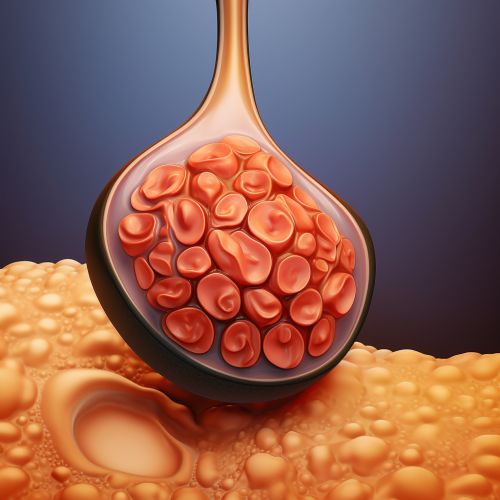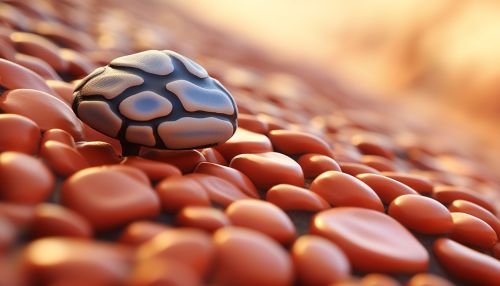Pituitary gland
Anatomy and Structure
The pituitary gland, also known as the hypophysis, is a small, pea-sized organ located at the base of the brain, just below the hypothalamus. It is attached to the hypothalamus by a thin stalk, known as the infundibulum, which contains both blood vessels and nerve cells.


The pituitary gland is divided into two distinct parts: the anterior pituitary, or adenohypophysis, and the posterior pituitary, or neurohypophysis. Each of these parts has a different structure and function.
Anterior Pituitary
The anterior pituitary is the larger part of the gland, making up about 75% of its total mass. It is composed of glandular tissue and is responsible for the production and release of several hormones, including growth hormone (GH), thyroid-stimulating hormone (TSH), adrenocorticotropic hormone (ACTH), follicle-stimulating hormone (FSH), luteinizing hormone (LH), and prolactin (PRL).
Posterior Pituitary
The posterior pituitary is composed of neural tissue and does not produce hormones itself. Instead, it stores and releases two hormones - oxytocin and vasopressin (also known as antidiuretic hormone, ADH) - that are produced in the hypothalamus.
Function
The pituitary gland plays a crucial role in the body's endocrine system. It produces and releases hormones that regulate a variety of bodily functions, including growth, metabolism, reproduction, and water balance.
Hormone Production and Release
The anterior pituitary produces and releases six major hormones:
1. Growth Hormone (GH): This hormone stimulates growth in all tissues of the body, including bone. It also plays a role in nutrient metabolism. 2. Thyroid-Stimulating Hormone (TSH): TSH stimulates the thyroid gland to produce and release thyroid hormones, which regulate the body's metabolism. 3. Adrenocorticotropic Hormone (ACTH): ACTH stimulates the adrenal glands to produce and release cortisol, a hormone that helps the body respond to stress. 4. Follicle-Stimulating Hormone (FSH): In women, FSH stimulates the growth of ovarian follicles, the structures that produce eggs. In men, it stimulates sperm production. 5. Luteinizing Hormone (LH): LH triggers ovulation in women and stimulates the production of estrogen and progesterone. In men, it stimulates the production of testosterone. 6. Prolactin (PRL): PRL stimulates milk production in women after childbirth.
The posterior pituitary releases two hormones:
1. Oxytocin: This hormone stimulates uterine contractions during childbirth and the release of milk during breastfeeding. 2. Vasopressin (Antidiuretic Hormone, ADH): ADH regulates water balance in the body by reducing urine production.
Disorders of the Pituitary Gland
Disorders of the pituitary gland can lead to a variety of health problems, depending on which hormones are affected. These disorders can be caused by a number of factors, including tumors, infections, injuries, or genetic conditions.
Pituitary Tumors
Pituitary tumors are the most common type of pituitary disorder. These tumors are usually benign, meaning they are not cancerous, but they can still cause serious health problems by interfering with the pituitary gland's ability to produce hormones.
Hypopituitarism
Hypopituitarism is a condition in which the pituitary gland does not produce enough hormones. This can lead to a variety of symptoms, depending on which hormones are affected.
Hyperpituitarism
Hyperpituitarism is a condition in which the pituitary gland produces too much of one or more hormones. This can also lead to a variety of symptoms, depending on which hormones are overproduced.
